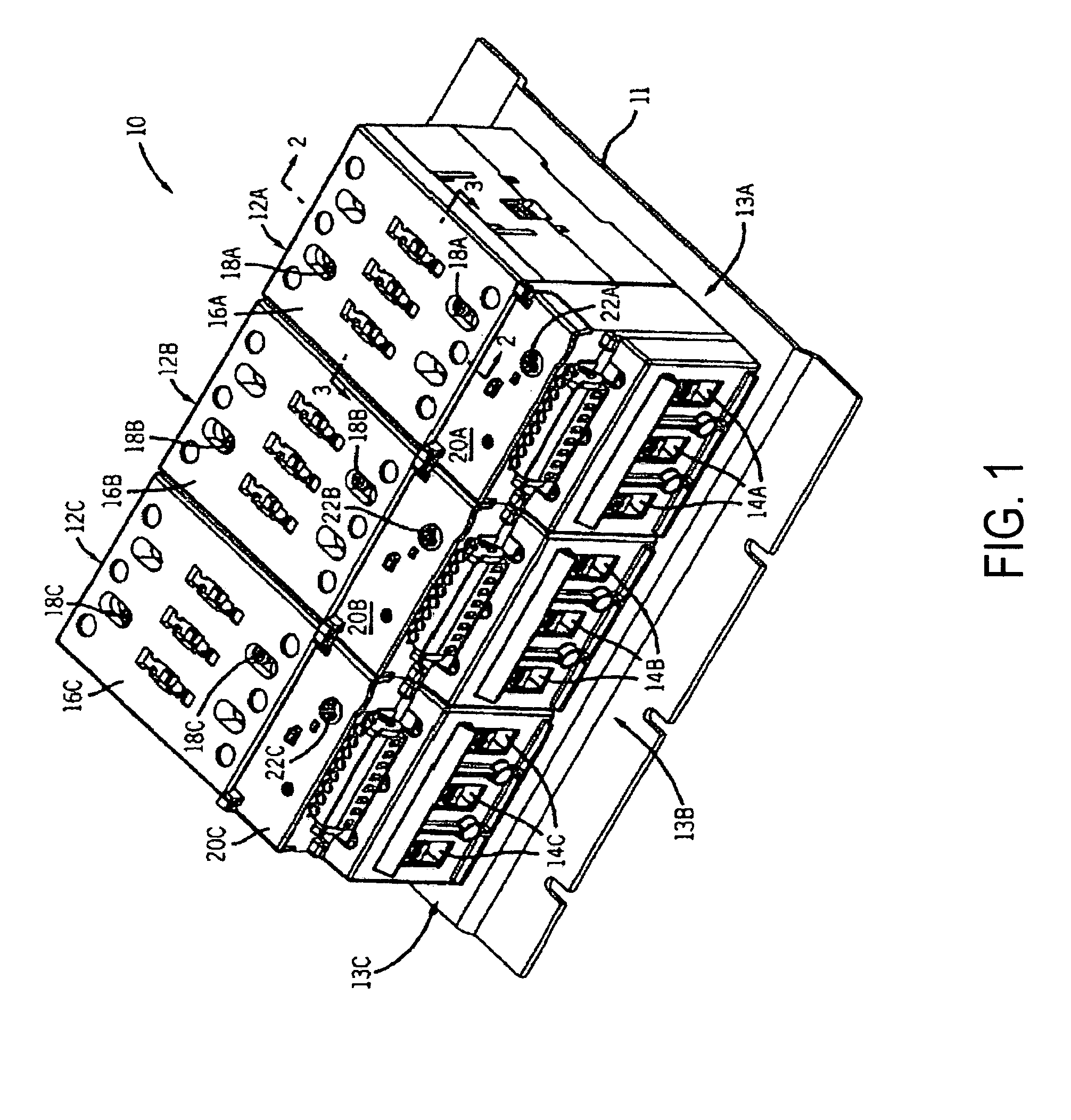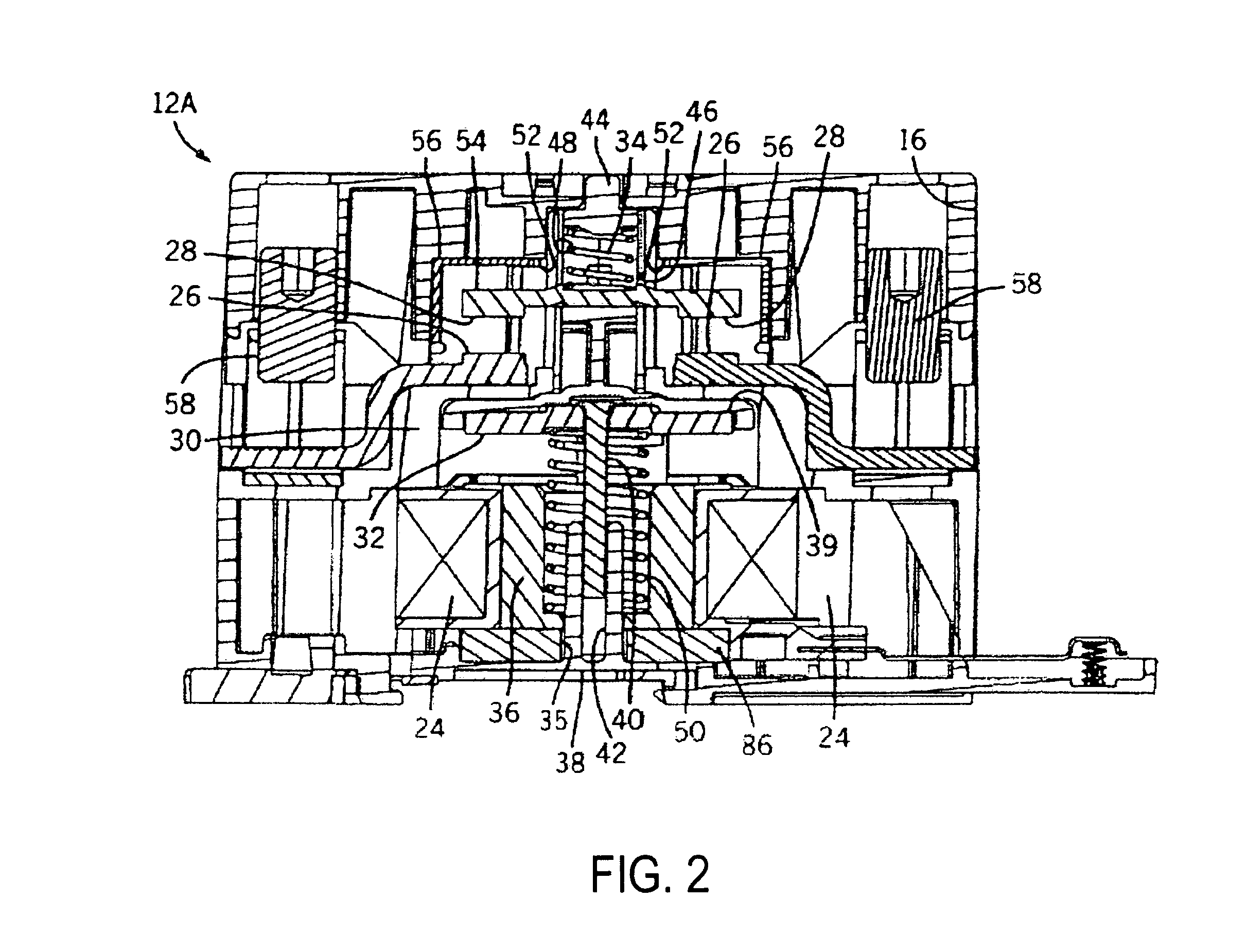Method and system of controlling asynchronous contactors for a multi-phase electric load
a technology of asynchronous contactor and electric load, applied in the direction of relays, emergency protective arrangements for limiting excess voltage/current, light and heating apparatus, etc., can solve the problems of contactor construction drawbacks, composite materials can be expensive, and contribute to the increase of contactor manufacturing costs, etc., to achieve the effect of reducing mechanical stress
- Summary
- Abstract
- Description
- Claims
- Application Information
AI Technical Summary
Benefits of technology
Problems solved by technology
Method used
Image
Examples
Embodiment Construction
The present invention will be described with respect to an electromagnetic contactor assembly for use in starter applications such as, the switching on / off of a load as well as to protect a load, such as a motor, from current overload, oscillation, and, ultimately, potentially damaging mechanical stresses. The electromagnetic contactor assembly and controls of the present invention are equivalently applicable to heating load contactor assemblies, on-demand modular contactor assemblies, modular large frame contactor assemblies, and the like. The present invention is also applicable with other types of contactor assemblies where it is desirable to reduce contact erosion resulting from arcs during breaking and bounce arcs during making of the contacts. Additionally, the present invention will be described with respect to implementation with a three-phase induction motor; however, the present invention is equivalently applicable with other electrical devices. Furthermore, the present i...
PUM
 Login to View More
Login to View More Abstract
Description
Claims
Application Information
 Login to View More
Login to View More - R&D
- Intellectual Property
- Life Sciences
- Materials
- Tech Scout
- Unparalleled Data Quality
- Higher Quality Content
- 60% Fewer Hallucinations
Browse by: Latest US Patents, China's latest patents, Technical Efficacy Thesaurus, Application Domain, Technology Topic, Popular Technical Reports.
© 2025 PatSnap. All rights reserved.Legal|Privacy policy|Modern Slavery Act Transparency Statement|Sitemap|About US| Contact US: help@patsnap.com



